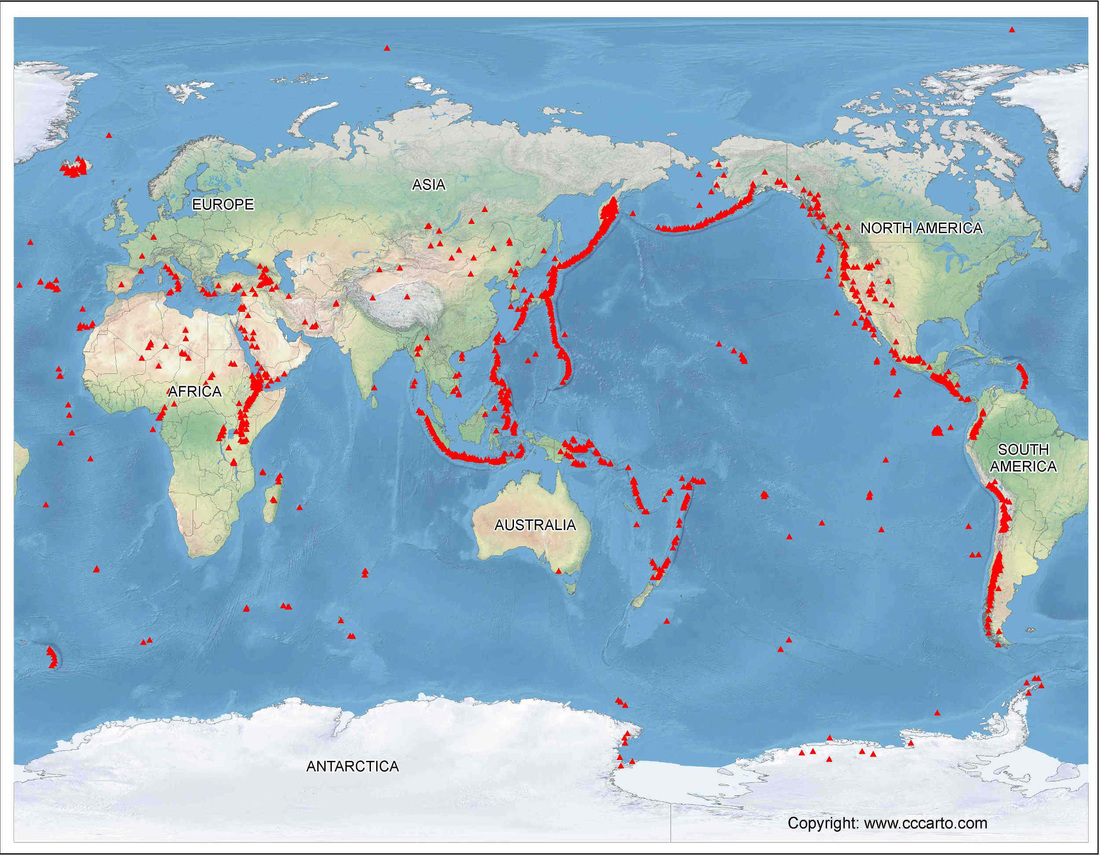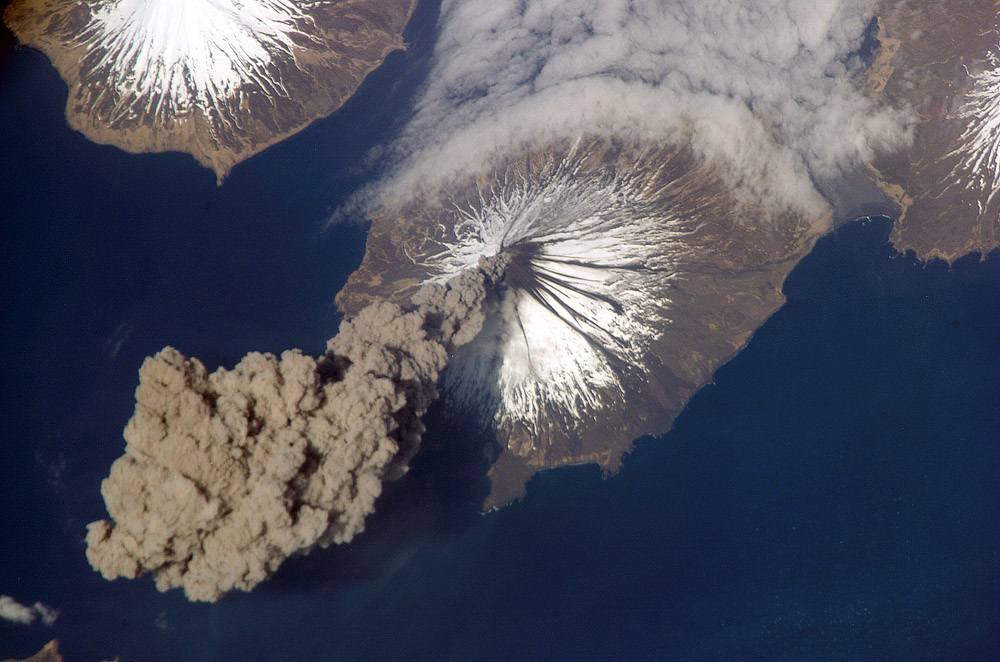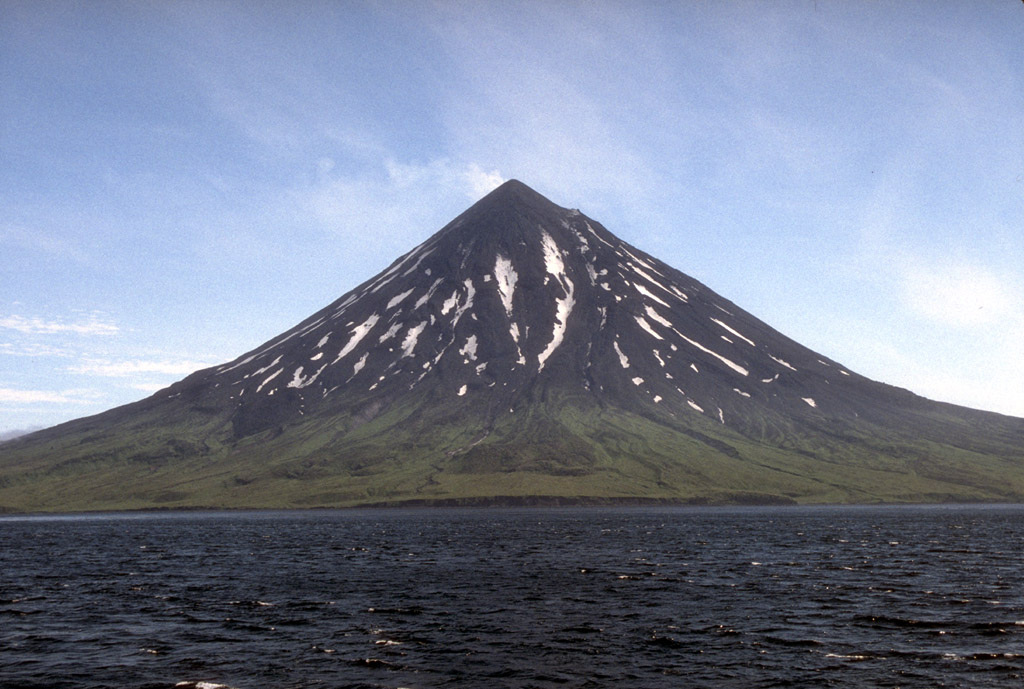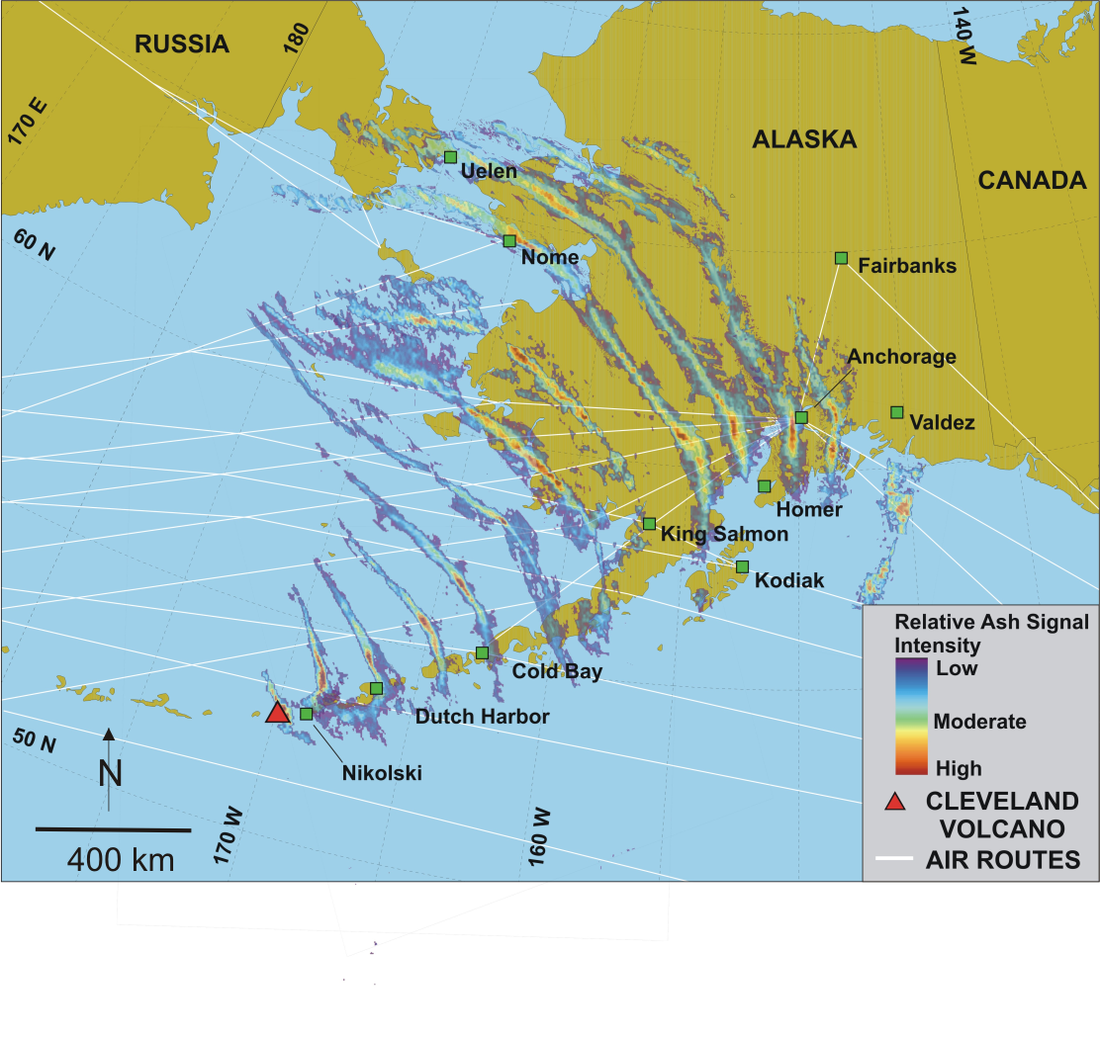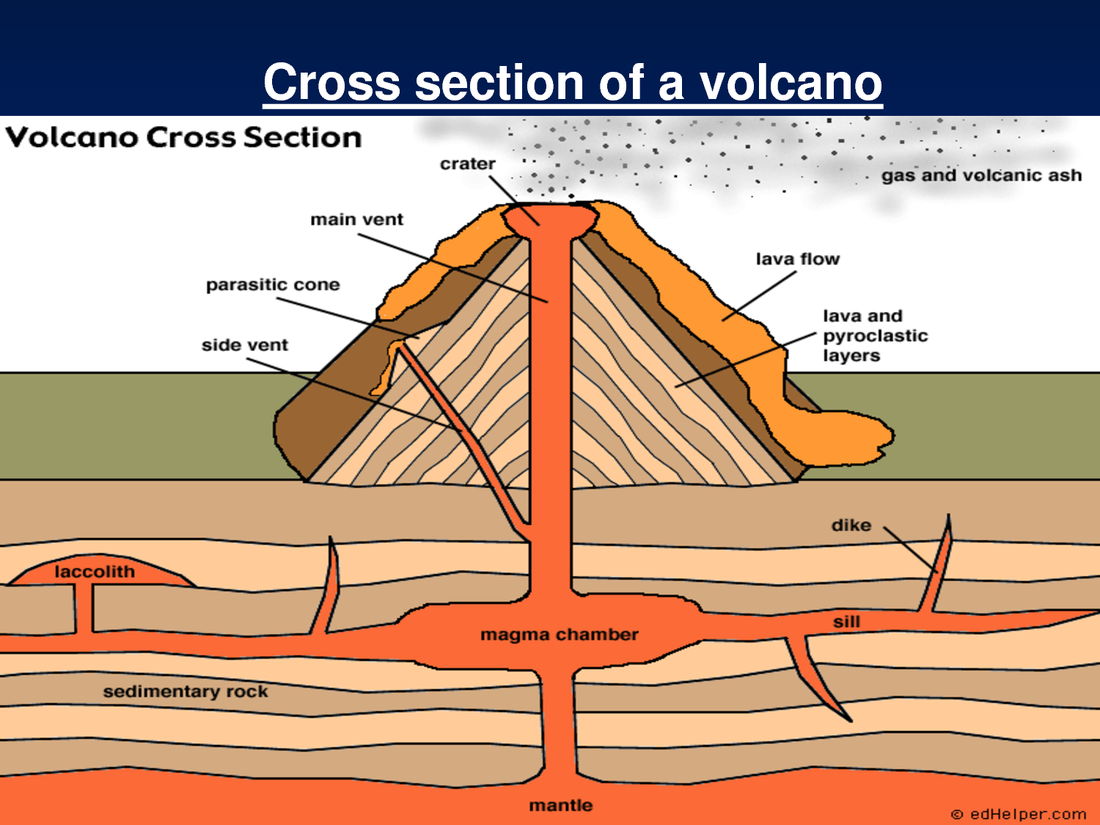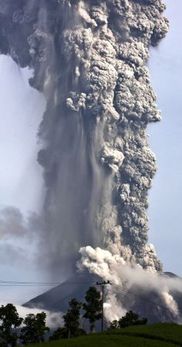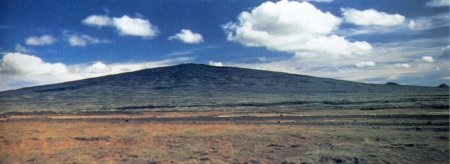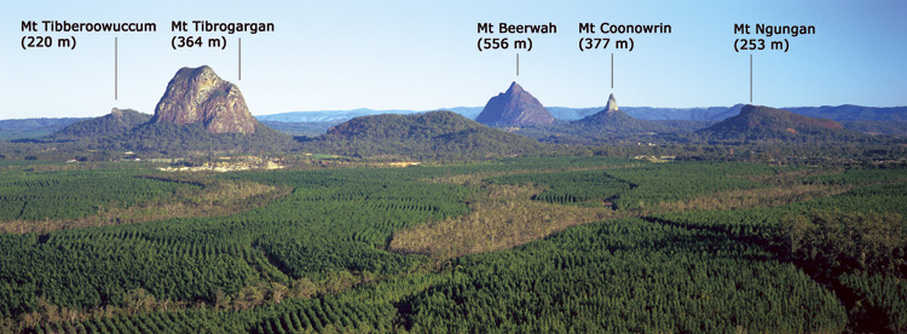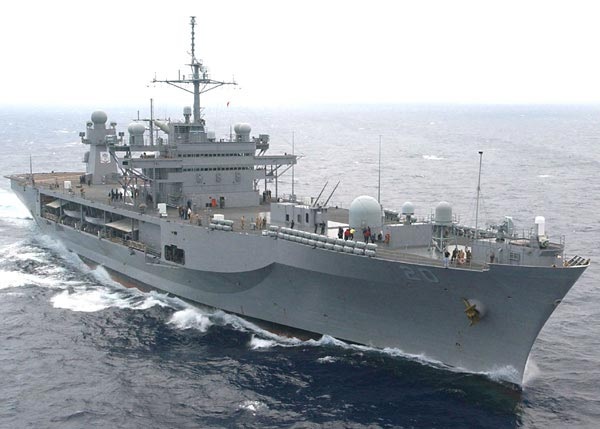Week 3 Volcanoes
The eruption of Mount Tavurvur volcano on August 29th, 2014. Captured by Phil McNamara.
Note the compression wave.
Why is that we see the explosion first and then hear it?
How can you calculate the distance of the camera from the volcano?
The image below is a map showing the sites of active volcanoes.
Classify the sites of volcanoes as either plate boundary of mid-plate.
Further classify the plate boundary volcanoes as either on subduction zones (converging plates) or sea-floor spreading (diverging plates).
Classify the sites of volcanoes as either plate boundary of mid-plate.
Further classify the plate boundary volcanoes as either on subduction zones (converging plates) or sea-floor spreading (diverging plates).
Mt Cleveland, Aleutian Island Chain, Alaska
The type of Volcano is evidence for Plate Tectonics
|
Converging Plates - Subduction zones
Tend to build Strato-Volcanoes. The lava extruded is molten crust and sea floor sediments. Much carbon dioxide may be emitted. The cooled lava is usually less dense that pure sea-floor rocks. Examples Mt Sinabung, Indonesia Diverging Plates - Sea floor spreading
Tends to build Mid-Ocean Ridges. The lava extruded is molten mantle material. This cools quickly to form dense basalt sea-floor. Examples Mid-Atlantic Ridge Mid-Tectonic Plate
Tends to build Shield Volcanoes. These are called "Hot Spot" Volcanoes. The lave extruded is molten mantle material. This cools quickly in the ocean. When the cone builds up over time a wide cone "shield shaped cone" results. We see these as island chains. Examples Hawaiian Islands |
An ancient volcanic landscape - The GlassHouse Mountains, Queensland
In May 1770 Captain Cook was navigating the HMS Bark Endeavour north along the coast of Queensland. He was interested in exploring further the glinting "mountains" that he observed. He named them the Glasshouse Mountains as the shape of them reminded him of the huge glass furnaces (glassshouses) back in his home Yorkshire, England.
The landforms are volcanic plugs from volcanoes that exited 26 to 27 million years ago. In the foreground you can get a hint to the fertility of these volcanic soils.
The landforms are volcanic plugs from volcanoes that exited 26 to 27 million years ago. In the foreground you can get a hint to the fertility of these volcanic soils.
Task 1 - Thinking Science Lesson 27 Floating and Sinking (compound variables)
This lesson is an investigation into the factors that affect whether an object sinks or floats.
The class has previous experience in this area. When they were calculating the density of different rocks, they found that pumice floated and granite sunk. Pumice and granite have the same mineral composition.
What factors combine to determine if an object sinks or floats?
The class has previous experience in this area. When they were calculating the density of different rocks, they found that pumice floated and granite sunk. Pumice and granite have the same mineral composition.
What factors combine to determine if an object sinks or floats?
|
Write a summary of how you developed the concept of DENSITY.
Name the two variables that affect the compound variable of DENSITY. Write a mathematical relationship for the concept of DENSITY. In pairs design a method to quickly find the density of water. Conduct this task and write your value for density on the whiteboard. Complete the density calculations provided. |
